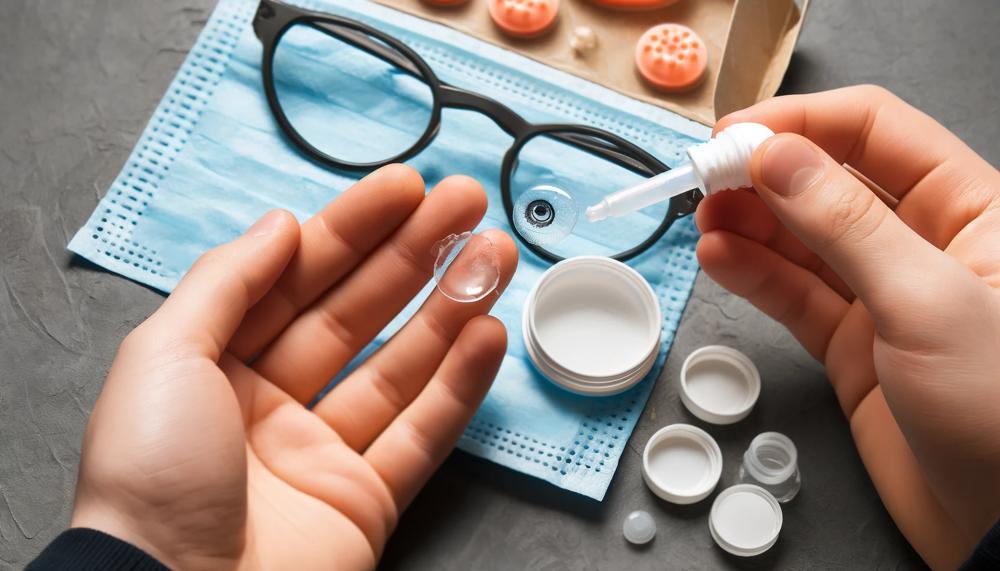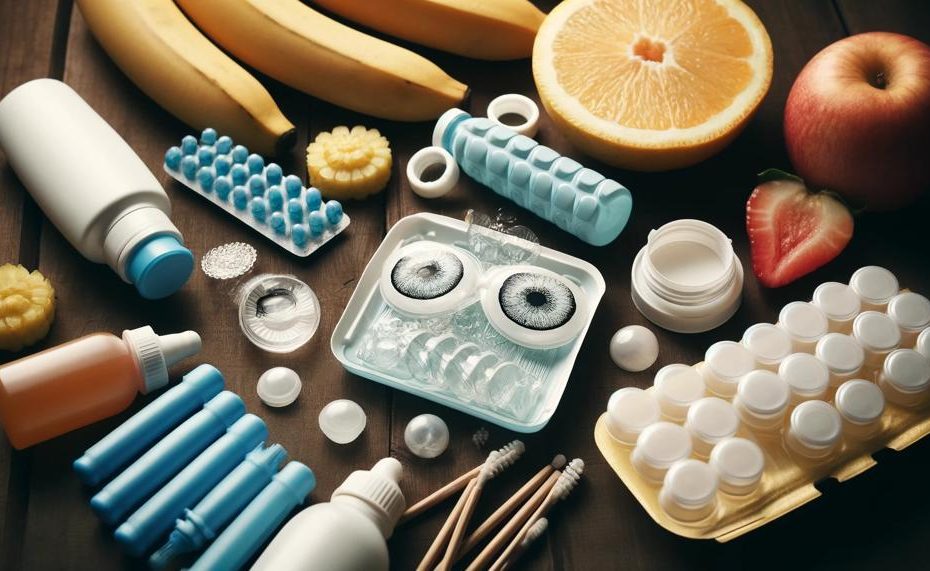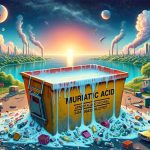In an age where sustainability intersects with our daily routines, the topic of disposing contact lenses the right way has sparked conversations among environmentally conscious individuals and health-savvy consumers alike. This seemingly small act can have profound implications, not just for our planet, but also for our well-being. With millions of lenses ending up in places they shouldn’t each year, understanding the ripple effect of our disposal habits is more crucial than ever.
So, how to dispose of contact lenses properly?
Don’t flush or dump your contact lenses down the toilet or sink; they won’t melt. Instead, put them in the trash. You can also recycle them through programs that collect used eyeglasses and contact lenses. For instance, you can take your old lenses, blister packs, and paper to an eye doctor’s office in your area that takes part in the program to recycle contact lenses. You can also send them to TerraCycle.
Microplastics from broken down contact lenses get into the water system and hurt the health of animals and the environment. It can take up to 500 years for contact lenses to break down in dumps, which could release harmful chemicals into the soil and water.
You can also recycle the package pack that comes with your next pair of lenses after putting your old lenses in it.
Join us as we navigate through these insights, offering a fresh perspective on a daily habit that, when adjusted, can contribute to a larger wave of positive change for our environment and ourselves.
Contents
Properly Disposing Contact Lenses
Why Proper Disposal is Critical:
Contact lenses, though small, wield a hefty environmental impact. Improper disposal wreaks havoc beneath the waves and on land. Let’s dive into the reasons:
- Marine Life Protection: Contact lenses, predominantly plastic, can be fatal for aquatic creatures. Mistaken for food, these lenses lead to choking or ingestion, often resulting in tragic outcomes.
- Microplastic Menace: As lenses disintegrate, they contribute to microplastic pollution. These minuscule pollutants are ingested by wildlife, entering the food chain and potentially impacting human health.
- Chemical Contamination: Decomposing contact lenses release harmful chemicals and bacteria, exacerbating pollution and health risks.
Correct Disposal Methods:

To curb these issues, here’s how you can responsibly dispose of your contact lenses:
| Method | Description | Environmental Benefit |
| Recycling Programs | Specialized recycling schemes transform lenses into new products, like park benches. | Reduces landfill waste, prevents marine pollution. |
| Trash Disposal | Remove from packaging, rinse, and discard in trash if recycling isn’t an option. | Limits environmental exposure, reduces risk to wildlife. |
How to Properly Dispose of Contact Lens Packaging
When it comes to chucking out the bits and bobs that sheath your peepers’ best pals—contact lenses, that is—it’s not just about lobbing them into the nearest bin.
We’ve got to think about our green and blue marble, after all. Here’s a guide, broken down into simple steps, to make sure you’re doing your part right.
Splitting Up the Packaging Components
First off, contact lens packaging usually comes in three parts: the cardboard box, the plastic blister packs, and the foil covers.
Each has its own path to follow when it comes to disposal.
Cardboard Boxes: The Easy Win
The cardboard bit is a doddle to dispose of. Just flatten it out and chuck it in the recycling bin.
Easy peasy, it’s as friendly to the earth as a rainy day is to a garden.
Plastic Blisters and Foil Covers: A Bit Tricky
These fellows are a tad more complicated. Not all recycling programs are keen on them, but don’t fret; there’s still hope.
| Item | How to Dispose | Why It Matters |
| Plastic Blister Packs | Check with local recycling for acceptance, or find a specialty recycling program. | Keeps plastics out of landfills and oceans, protecting aquatic life. |
| Foil Covers | Generally too small for curbside recycling; best to chuck in the trash after ensuring no residues remain. | Prevents machinery clogs in recycling facilities, ensuring smooth operation. |
| Lenses Themselves | Bin them. Sadly, these aren’t recyclable yet due to their small size and material complexity. | Avoids harming aquatic life and contributing to microplastic pollution. |
A Nod to Safety and Creativity
Don’t let those tiny bits and pieces linger where they shouldn’t. Keep them away from curious kids and pets.
And here’s a thought—those old lens cases might just make nifty little containers for your knick-knacks or even a mini pot for your next succulent project.
How to Recycle Contact Lenses
Disposing of contact lenses in an environmentally-friendly manner is crucial to prevent contributing to the plastic pollution affecting our oceans and waterways. Here are some key strategies:
Reduce, Reuse, Recycle: A Guide to Eco-Friendly Contact Lens Disposal
- Reduce Usage:
- Opt for extended-wear contact lenses over daily disposables to lessen waste.
- Reuse and Repurpose:
- Before tossing, consider repurposing old contact lens cases for small storage needs.
- Recycling Programs:
- Engage with programs like Bausch andamp; Lomb and TerraCycle, offering recycling for contacts and their packaging.
A Brief History of Contact Lenses
Contact lenses, those dainty guardians of sight, have traipsed a remarkable journey since their inception in the 19th century. Let’s embark on a brief saunter through their evolution.
In 1887, a German glassblower named F.E. Muller fashioned the first glass contact lens, an invention more novel than practical, for it invited discomfort and limited wear time. Then, in 1936, William Feinbloom introduced the first plastic lenses, a leap forward, yet still a stone’s throw from perfection.
A pivotal moment blossomed in the 1950s with George Butterfield’s brainchild – the corneal lens. This lens hugged just the cornea, allowing more oxygen to kiss the eye, thus ramping up comfort for long-term wear. A true leap was witnessed in 1960 when Kevin Tuohy unveiled the first soft contact lenses made of hydrogel, a material gentler and kinder to our peepers.
The table below illustrates these pivotal milestones:
| Year | Inventor | Advancement |
| 1887 | F.E. Muller | First Glass Contact Lens |
| 1936 | William Feinbloom | First Plastic Contact Lens |
| 1950s | George Butterfield | Corneal Lenses |
| 1960 | Kevin Tuohy | Soft Hydrogel Lenses |
In the 1970s, the saga continued with gas-permeable lenses, champions of oxygen supply, making them a healthier choice for our windows to the world. Bausch andamp; Lomb, in 1971, democratized soft lenses, thus broadening their reach.
1987 witnessed another landmark with Johnson andamp; Johnson’s Vistakon division rolling out disposable lenses, heralding an era of enhanced convenience, bidding adieu to the tedium of cleaning.
As we sauntered into the 2000s, silicone hydrogel lenses emerged, offering supreme breathability. The new millennium also welcomed lenses that corrected astigmatism and presbyopia, amplifying their utility.
Today, we stand at the cusp of a revolution with daily disposables, extended-wear varieties, and even smart lenses, making strides in health monitoring.
Conclusion
Figuring out how to properly throw away contact lenses isn’t just a regular task; it’s a responsible choice that affects our health and the world. By showing the hidden path of wasted lenses from our sinks to the sea, where they become harmful microplastics or unintended marine meals, this guide has shed light on their not-so-harmless trip. Every time we carefully throw away lenses and their packing, we are all making a big difference in protecting the environment from these harmful effects.
The steps are easy but important. For example, you can make sure that lenses go in the trash instead of the toilet by taking part in special recycle programs. Remember that rinsing lenses before throwing them away and sorting lens boxes into the right trash or recycling bins is part of a larger philosophy of caring for the earth and being responsible for your actions.
As we find ourselves at the point where ease and awareness meet, let’s seize the chance to build a future where our vision is as clear as our water.





